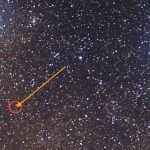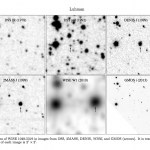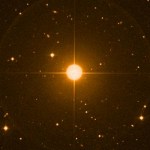brown dwarfs
"As a boy I believed I could make myself invisible. I'm not sure that I ever could, but I certainly had the ability to pass unnoticed." -Terence Stamp
When we look up at the night sky from a dark location here on Earth, somewhere around 6,000 stars greet you on a clear night.
Image credit: Tamas Ladanyi (TWAN).
This is just a tiny fraction of the hundreds of billions of stars that actually make up our galaxy, which makes sense, considering how large our galaxy is and how vast the distances between the stars is. You'd probably think that the stars we can see are pretty representative of the…
I think we should take some pie over, in person.
Discovery of a Binary Brown Dwarf at 2 Parsecs from the Sun - Kevin Luhman, ApJLetters in press.
That is just over 6 light years away, making it the third closest system from the Sun, and the closest known substellar system, only the α Cen triple system, and Barnard's Star, an old red dwarf, are closer.
Detection images for our new neighbour. The WISE discovery image is middle bottom, the Gemini image at the bottom right shows the resolved pair clearly.
This is a spectacular and somewhat surprising discovery, that something could be this…
Ahh, stars. Giant furnaces of nuclear fusion. Doing the stuff our Sun does, burning hydrogen fuel into helium (among other things) and emitting lots of visible light and energy in the process.
But when we take a look at brown dwarfs, they aren't like normal (i.e., main sequence) stars like our Sun. Instead of burning hydrogen into helium for their fuel, brown dwarfs don't generate enough pressure to make that happen; they can only burn hydrogen into deuterium.
Let's go over what the differences here are. A hydrogen nucleus is just a proton, with a mass of 938.272 MeV/c2. (I use these units…


